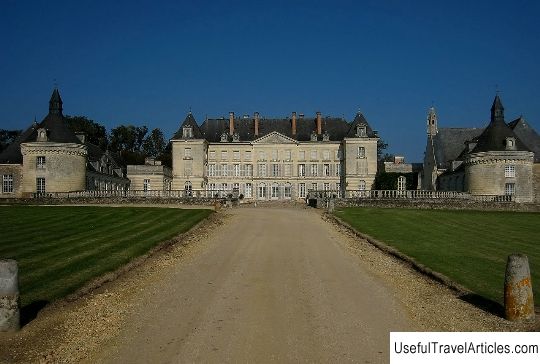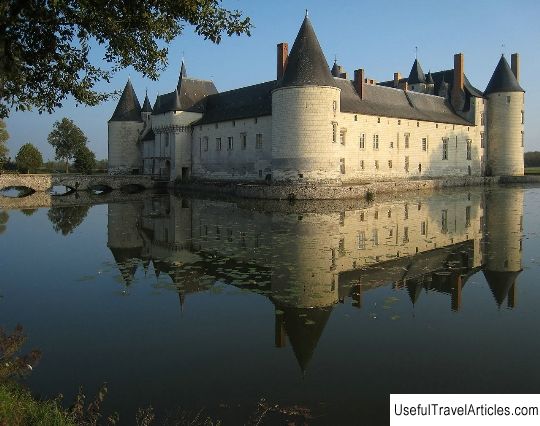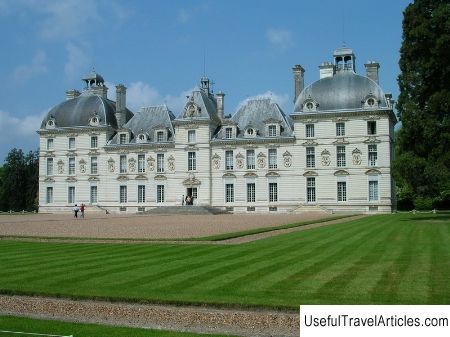Chateau de Serrant description and photos - France: Loire Valley

Chateau de Serrant description and photos - France: Loire Valley. Detailed information about the attraction. Description, photographs and a map showing the nearest significant objects. The title in English is Chateau de Serrant. Photo and descriptionSerran Castle is one of the castles of the Loire Valley, built in the Renaissance style. It is located 20 kilometers from Angers, near the city of Saint-Georges-sur-Loire. Initially, a castle was built on this site in the XIV century, it belonged to the Le Brie family. By the 16th century, the castle was already in a dilapidated state, and one of the representatives of the Le Brie family, Pontus, received permission from Louis XI to build a fortified fortress on the site of the old building. His descendant Charles Le Brie began work in the middle of the 16th century, which was carried out almost continuously for two centuries. Several famous architects of that time worked on the construction of the castle - for example, Philibert Delorme, whose work is the wing of the Chenonceau castle across the Cher River, and Jules Hardouin Mansart, creator of the Mirror Gallery of the Palace of Versailles. Also, the architect Jean Delespenne applied his talent and skills to the appearance of the castle, who built the main part of the new castle. The chapel, created by Mansart, houses the tomb of the Marquis de Vaubran, one of the owners of the castle - this tomb was made by the artist Charles Lebrun and the sculptor Kuazevox. Despite such a diverse participation of representatives of architecture in the fate of the castle, their collective creation does not look eclectic; on the contrary, it may seem that the construction was managed by the hand of one architect. After Le Brie, Hercule de became the new owner of the castle at the end of the 16th century. Rogan, 40 years later, was succeeded by Guillaume de Botrou, Comte de Serran. After him, the castle passed to the Marquis de Vaubrin and his wife Marguerite. In the middle of the 18th century, the owner changed again - it was the wealthy Irishman Antoine Walsh. His successors laid out English-style gardens around the castle. In the 30s of the XIX century, the castle again changes its owner - it becomes the Duke de Tremouille, whose heirs are currently running the castle. Distinctive features of the castle are a deep moat and corner towers left over from the previous structure, round domes uncharacteristic for French castles on these towers, stone bridges. From the interior of the castle, it is worth noting the Flemish tapestries, a rich library with two thousand volumes, two works by the famous Italian sculptor Antonio Canova, as well as the sculpture of Pieta - the Virgin Mary mourning Christ, she is in the chapel at the castle. His successors laid out English-style gardens around the castle. In the 30s of the XIX century, the castle again changes its owner - it becomes the Duke de Tremouille, whose heirs are currently running the castle.Distinctive features of the castle are a deep moat and corner towers left over from the previous structure, round domes uncharacteristic of French castles on these towers, stone bridges. From the interior of the castle, it is worth noting the Flemish tapestries, a rich library with two thousand volumes, two works by the famous Italian sculptor Antonio Canova, as well as the sculpture of Pieta - the Virgin Mary mourning Christ, she is in the chapel at the castle. His successors laid out English-style gardens around the castle. In the 30s of the XIX century, the castle again changes its owner - it becomes the Duke de Tremouille, whose heirs are currently running the castle.Distinctive features of the castle are a deep moat and corner towers left over from the previous structure, round domes uncharacteristic for French castles on these towers, stone bridges. From the interior of the castle, it is worth noting the Flemish tapestries, a rich library with two thousand volumes, two works by the famous Italian sculptor Antonio Canova, as well as the sculpture of Pieta - the Virgin Mary mourning Christ, she is in the chapel at the castle. Distinctive features of the castle are a deep moat and corner towers left over from the previous structure, round domes uncharacteristic for French castles on these towers, stone bridges. From the interior of the castle, it is worth noting the Flemish tapestries, a rich library with two thousand volumes, two works by the famous Italian sculptor Antonio Canova, as well as the sculpture of Pieta - the Virgin Mary mourning Christ, she is in the chapel at the castle. Distinctive features of the castle are a deep moat and corner towers left over from the previous structure, round domes uncharacteristic for French castles on these towers, stone bridges. From the interior of the castle, it is worth noting the Flemish tapestries, a rich library with two thousand volumes, two works by the famous Italian sculptor Antonio Canova, as well as the sculpture of Pieta - the Virgin Mary mourning Christ, she is in the chapel at the castle.    We also recommend reading Spinalonga island description and photos - Greece: Agios Nikolaus (Crete) Topic: Chateau de Serrant description and photos - France: Loire Valley. |




